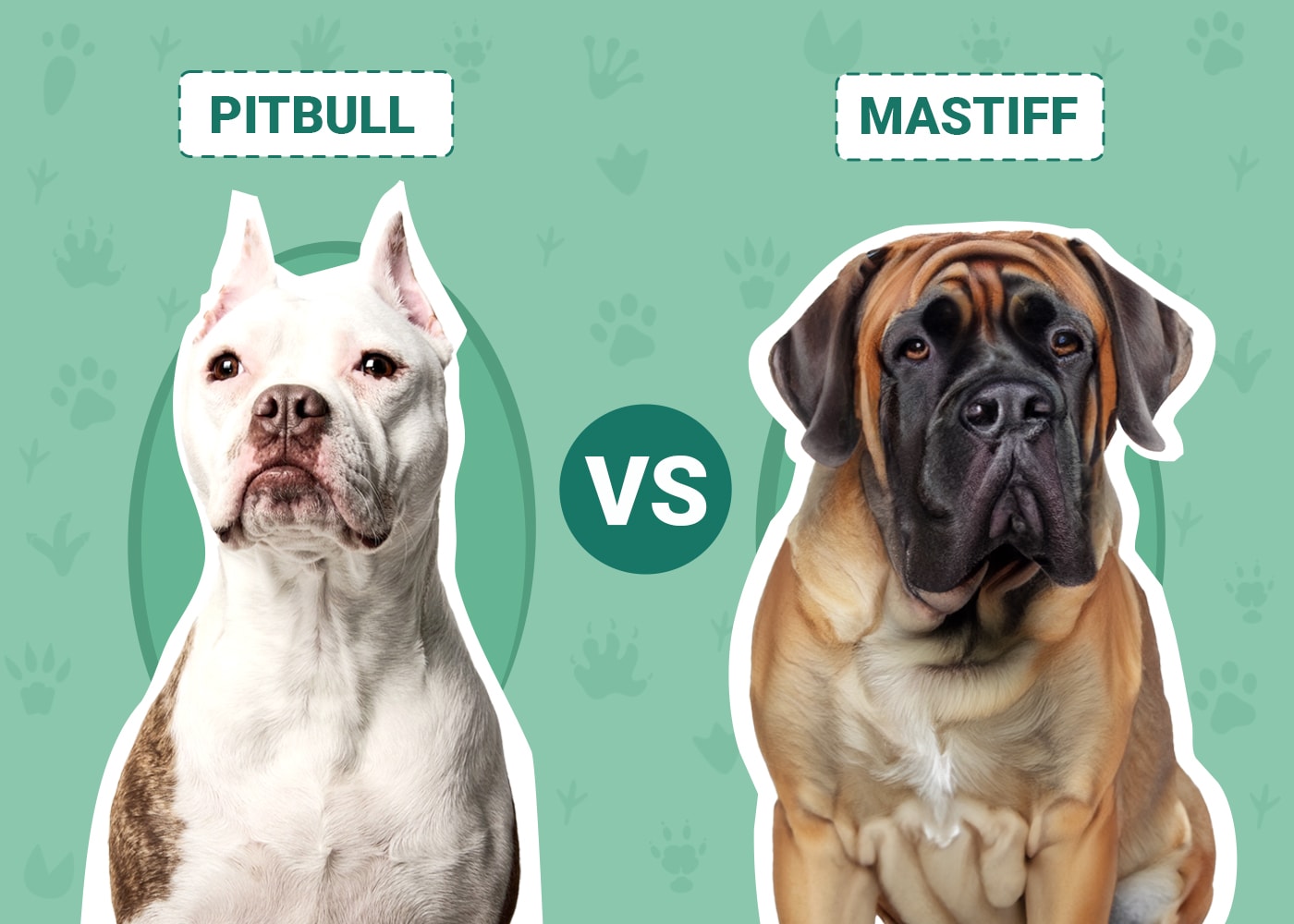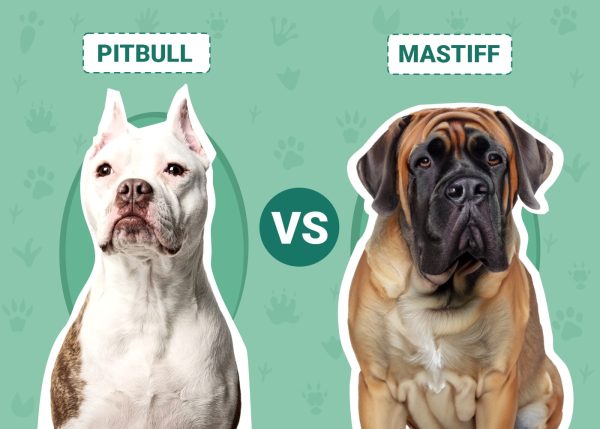Click to Skip Ahead
The Pit Bull and Mastiff are exceptional family dogs despite bearing a brutal background that belies their modern-day affectionate nature. The powerful guardians maintain the courageous and confident air of their arena-fighting forebears, but little else resembles their aggressive ancestors. Both dogs are gentle, docile, and friendly companions. Discover what sets them apart and which could be your next family pet as we explore the differences between the Pit Bull and the Mastiff.
Visual Differences
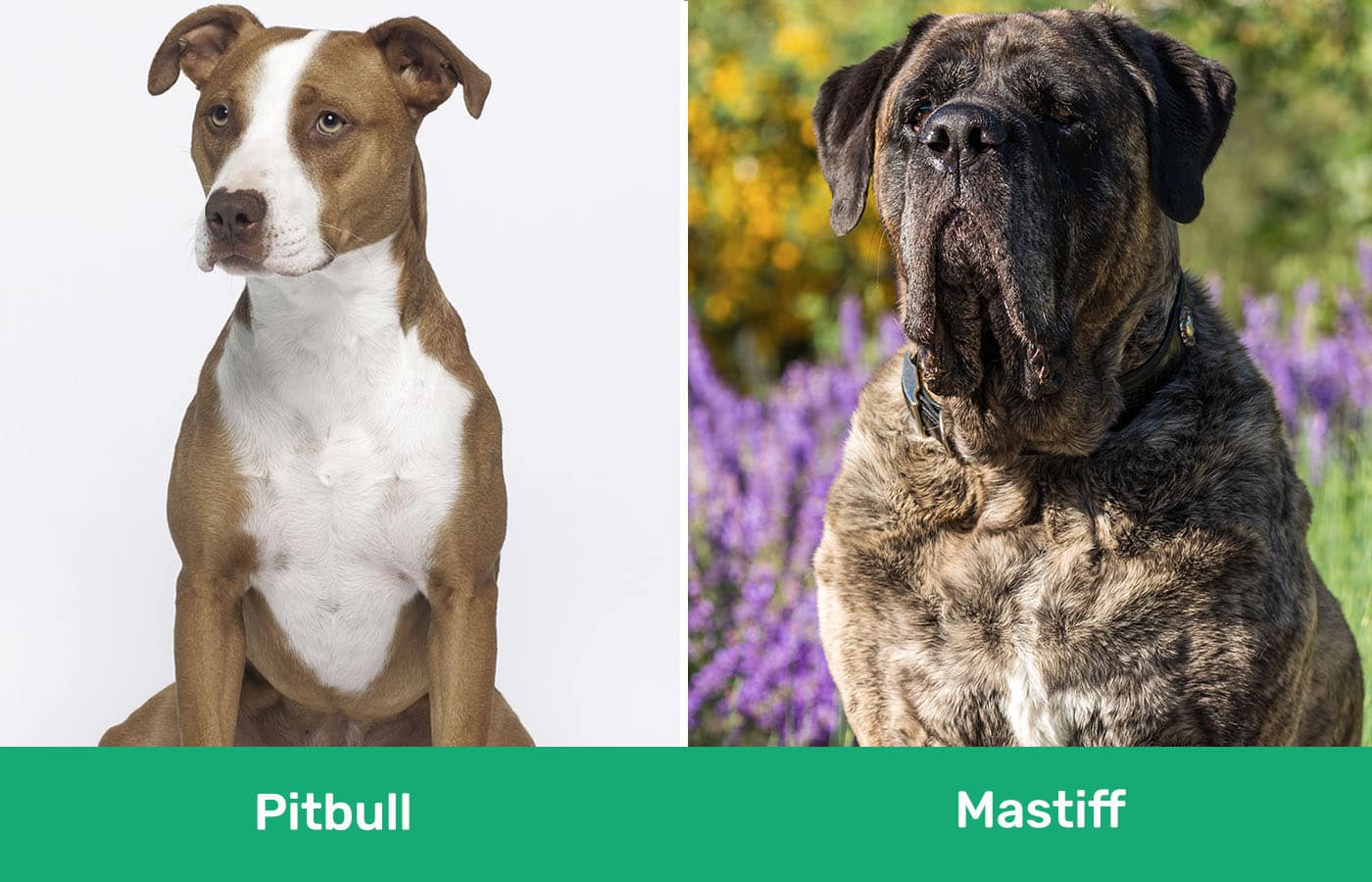
At a Glance
- Average height (adult): 17–21 inches
- Average weight (adult): 30–60 pounds
- Lifespan: 8–15 years
- Exercise: 1–2 hours a day
- Grooming needs: Low
- Family-friendly: Yes
- Other pet-friendly: Sometimes
- Trainability: Intelligent, faithful, easy to train
- Average height (adult): 5+ inches
- Average weight (adult): 120–230 pounds
- Lifespan: 6–10 years
- Exercise: 1 hour a day
- Grooming needs: Low
- Family-friendly: Yes
- Other pet-friendly: Often
- Trainability: Intelligent but stubborn
Pit Bull Pet Breed Overview
The American Pit Bull Terrier is the most common of the Pit Bull-type dogs, a general group of dogs deriving from English Bulldogs and Terriers. Pit Bulls can either be purebred or mixes of Bull Terrier and Bulldog types.
Originally bred for blood sports in the 1800s, including bull-baiting and dog fighting, Pit Bulls are often misunderstood and rejected for fear of potential aggression. Indeed, Pit Bulls may have a high prey drive that doesn’t always suit other animals. But even in the fighting arena, aggression toward humans was unallowable, and Pit Bulls are generally some of the sweetest and most good-natured household pets.
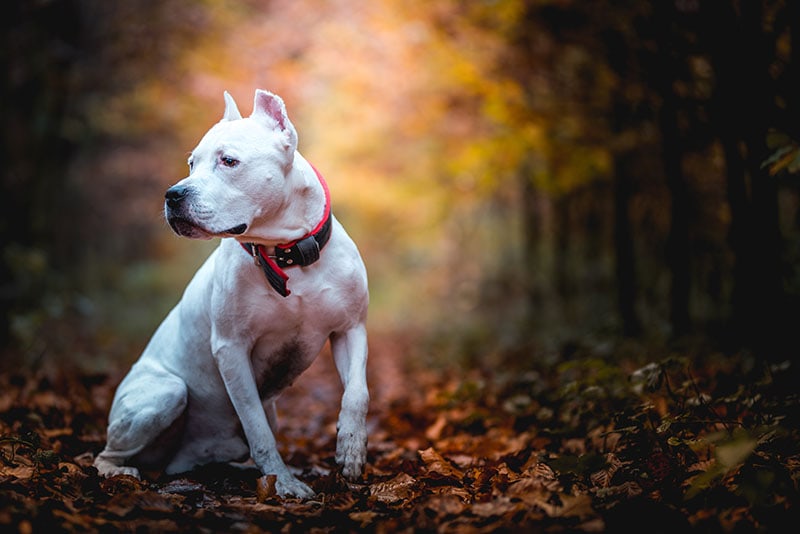
Personality / Character
Pit bulls of all kinds share a warm temperament. They are loyal to all family members, particularly children, offering a fun-loving, patient, and relaxed personality. Bred for courage and tenacity, a Pit Bull’s determination to complete its task can be positive or negative. The muscly, deep-chested pups can be challenging to control without proper training, but their love of people, including strangers, comes standard. Other dogs, especially Pit Bulls, may cause conflict, which could become extremely dangerous if they engage physically.
Training
Training Pit Bulls isn't overly challenging due to their intelligence and desire to please their owners. They still sport the Terrier side that can be rambunctious and strong-willed. But with an affectionate nature and a determination you can use to your advantage, Pit Bulls can learn quickly. Commands like recall, “look,” and “leave it,” and frequent exposure to new situations will help manage aggressive tendencies. Obedience classes and sports are excellent options to provide positive stimulation.
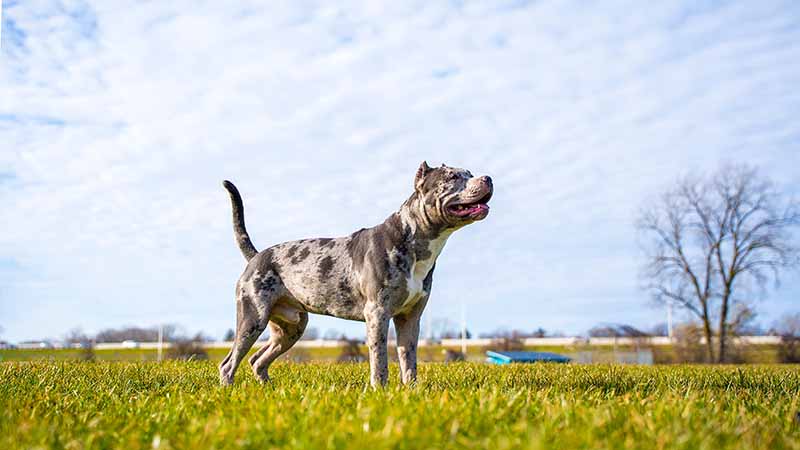
Health & Care❤️
Grooming a Pit Bull is pleasantly minimal. The sleek, short, and low-shedding single coats generally only demand brushes with a bristle brush one to three times weekly. Ears and teeth should have weekly cleanings, and bathing should only occur once every 1 ½–2 months.
Pit bulls are relatively energetic, often needing at least an hour of daily activity. Long walks, agility training, and games like tug-of-war are great ways to bond with your dog. Common health issues include hip dysplasia, knee problems, cataracts, allergies, and heart disease. Annual vet checkups and daily exercise prevent obesity and related health problems.
Breeding
Finding reputable Pit Bull breeders is crucial in avoiding the neglect and abuse that leads to aggression. Unfortunately, the American Pit Bull Terrier is not AKC-recognized, and the infinite number of pit mixes that fall under the “Pit Bull” category makes it challenging to determine one’s character. Many Pit Bulls come from backyard breeders. As one of the most common dogs in the country’s animal shelters, prospective Pit Bull owners should explore adoption as a first choice for a family pet.
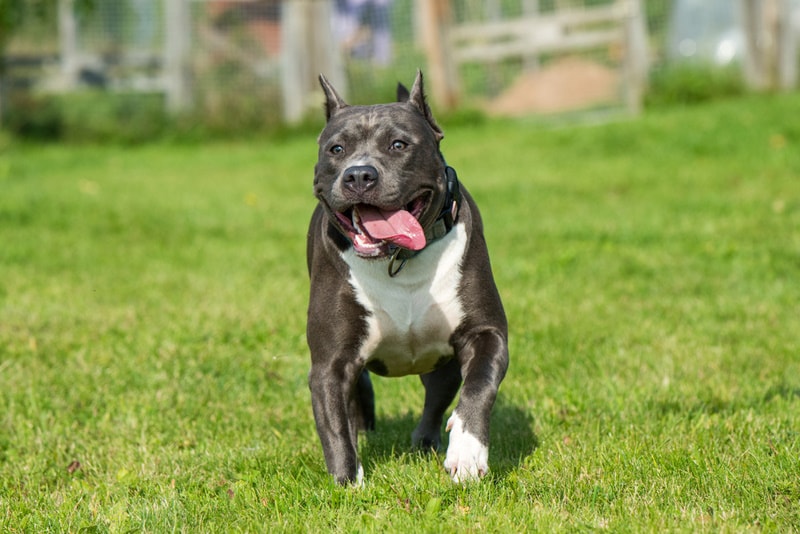
Suitable For:
Families with children and no other dogs are ideal for a people-loving Pit Bull. Depending on your Pit Bull's unique personality, they can have varying energy levels, so it’s always best to be ready for activity. Pit bulls benefit greatly from devoted owners who can provide enough attention and are sensitive to their needs, especially regarding socialization and training. They can be intense, overly friendly, and sometimes aggressive, requiring firm yet positive direction.
Mastiff Overview
Mastiffs are another dog group with several offshoot breeds, including the Bullmastiff, Tibetan Mastiff, and Cane Corso. The enormous dogs originated over 3,000 years ago in Ancient Greece as war dogs and guard dogs. The British used Mastiffs as estate guardians, and when Caesar invaded around 55 B.C., their power impressed the Romans enough to bring them home as arena-fighting dogs.
The English Mastiff is the quintessential Mastiff breed, with the AKC recognizing it simply as the “Mastiff.” Standing over 27 inches tall and weighing up to 230 pounds, the largest of these working dogs can be over four times the size of a Pit Bull. While not as well-rounded as a worker, the laid-back Mastiff makes a serviceable watchdog or therapy dog.
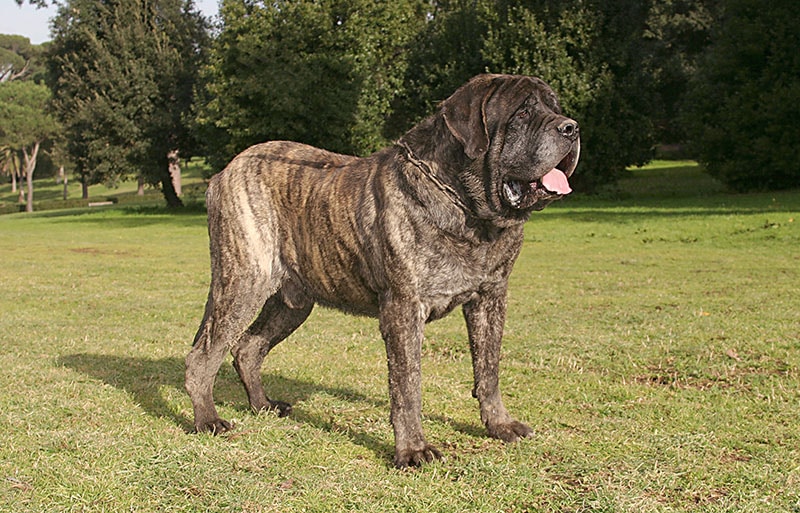
Personality / Character
The Mastiff is docile, patient, and often content with less activity. Though they can often be clumsy, there’s dignity in their character and grandeur in their form. They are highly loyal to their owners and excellent with kids, though their affection won’t extend past the family. Wary of strangers, they will become defensive against any perceived threats. Although they aren’t as friendly with people as Pit Bulls, they are typically more open to other animals and rarely aggressive with dogs.
Exercise
A Mastiff will be more of a couch potato than an up-for-anything Pit Bull, but that doesn’t mean they can lie around all day. Due to their size, they need gentler exercise that won’t stress their joints. Walks and moderate play for up to an hour will typically satisfy the Mastiff’s exercise needs. Needing moderate mental stimulation, Mastiffs require toys in the house to stay content.
Training
Training Mastiffs is a trickier task than with most breeds. They’re stubborn and generally regarded as one of the least intelligent dog breeds for following directions. Early socialization and positive training are critical during the Mastiff’s over-long puppy period. As they age, they grow more aloof, so exposure to new experiences early and often will sustain their calm demeanor in more situations. Doing so is crucial, given their size and the subsequent challenges in controlling them if they aren’t disciplined.
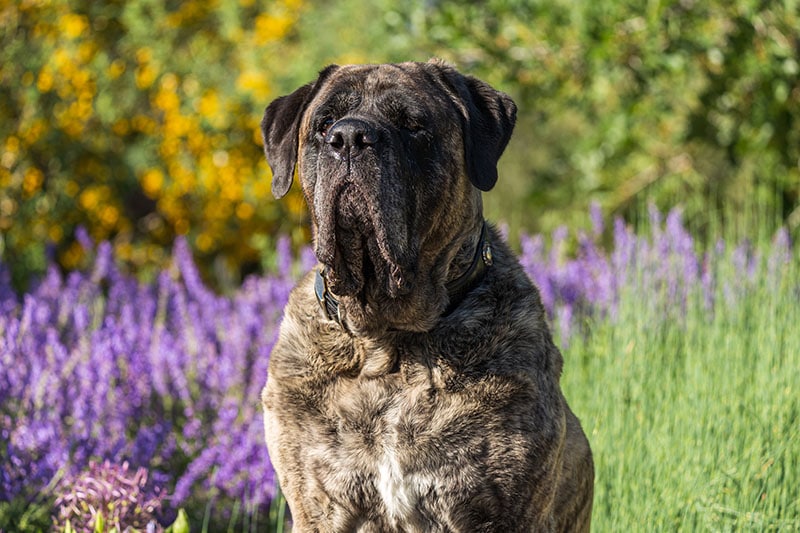
Health & Care❤️
Grooming needs for Mastiffs, like those for Pit Bulls, are relatively low. Their short double coat will shed more profusely during the spring and fall months, and their larger size means more time caring for them. Compared to Pit Bulls (and most breeds in general), Mastiffs are big droolers and can get stinky, making cleaning a more frequent need.
Being a giant breed, Mastiffs have a notably shorter life expectancy of only 6–10 years. Common health issues include joint problems, heart disease, allergies, and eye disorders. Mastiffs are also susceptible to various cancers and degenerative myelopathy, a degenerative spinal condition. Frequent checks during grooming and annual vet visits are essential in identifying and managing risks early.
Breeding
With many Mastiff breeds earning AKC recognition, finding a purebred Mastiff is more straightforward than finding a Pit Bull. You can reference the Mastiff Club of America website for help finding reputable breeders. Screening for health issues is crucial due to the numerous health issues that affect the breed. Puppies typically cost $1,000–$1,500, though you may also find them for less than $500 in many cases, especially if you find a rescue.
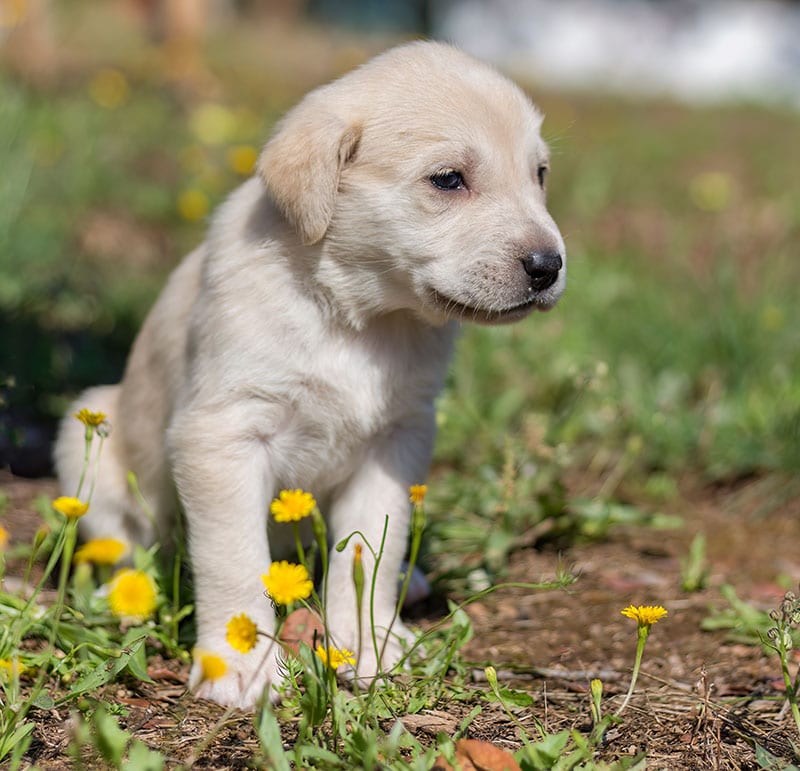
Suitable For:
Mastiffs require an experienced and capable owner who can overcome their training challenges with attention and obedience classes. The giant dogs are gentle by nature and not overly excitable, so they fit well with children and get along fine in apartments with limited space. A primary concern is the investment. Everything about owning a Mastiff, from their crate to their food, will be more expensive than other breeds, which is a key consideration for a potential pet parent.
Are Pit Bulls Dangerous?
Pit bulls are at a disadvantage the second they enter the world. With their history of aggressive fighting throughout the 1800s, many have attached a stigma to these hardworking, versatile dogs that responsible breeders have tried to overcome for decades. The Pit Bull type is the focus of most breed-specific legislation. In the shelter, these dogs are one of the most at-risk for euthanasia because so many would-be adopters carry misconceptions about them.
Do Pit Bulls attack people? They can, but then, so can every other breed. You can look at it from several angles, but Pit Bulls aren’t guaranteed to be more dangerous than the next family dog.
Many Pit Bull owners choose the dogs for their supposed aggression, often fostering it outright through abuse or neglecting their pets to the point that they respond fearfully to new situations. All dogs require training and socialization to be model citizens. Unfortunately, Pit Bulls are often the victims of unethical ownership, promoting their poor image.
What Are the Different Types of Pit Bulls?
Pit bull is a generic term encompassing countless dogs that refers to purebred Pit Bull types and mixes. There are four types of Pit Bulls deriving from Terrier and Bulldog mixes.
American Staffordshire Terrier
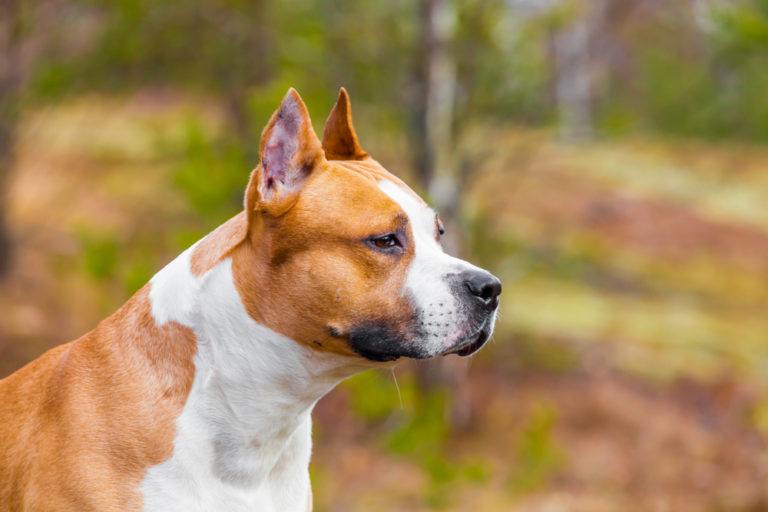
As a well-rounded working dog that dates to the 1800s, the American Staffordshire Terrier is the only AKC-recognized Pit Bull breed. They grow to roughly 19 inches at the shoulder and weigh up to 70 pounds, a larger dog than their English ancestors. Am Staffs are athletic, loyal, playful, and intelligent. Though sociable, they can also exhibit a high prey drive around other animals.
American Pit Bull Terrier
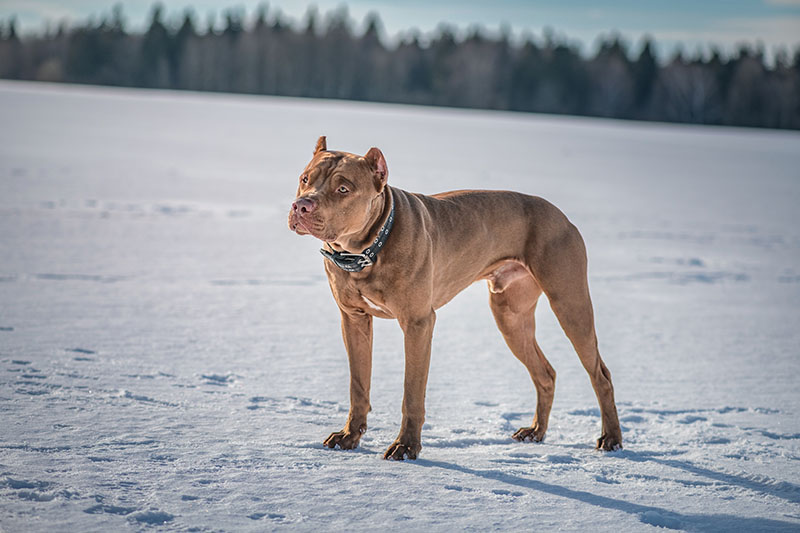
The American Pit Bull Terrier is the most popular Pit Bull type and is UKC-recognized. The breed was one of the most common in the dog fighting world before its outlaw, and many modern dogs carry the same prey drive. Still, they display an incredible ability to bond with owners and their children, an affectionate and even-tempered breed around people. They have impressive versatility, making a suitable breed for detection, search and rescue, and therapy roles.
Staffordshire Bull Terrier
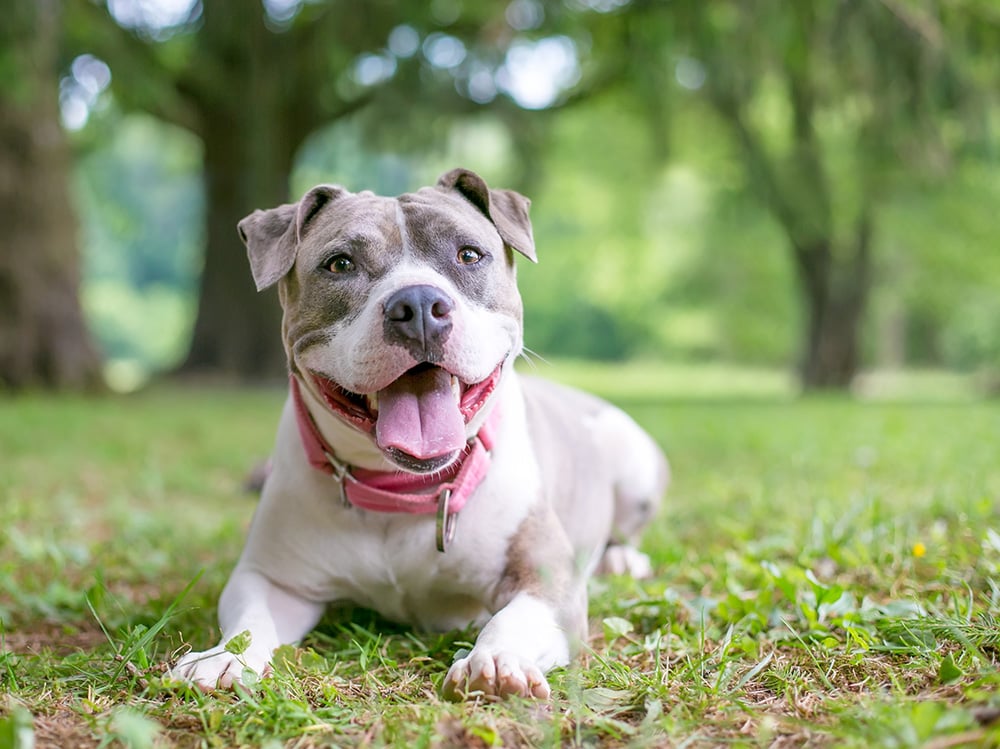
The Staffordshire Bull Terrier only reaches 40 pounds at most, but these muscular dogs bred for quick and agile work in their native England are brimming with personality. It is the only Pit Bull breed with UKC and RKC recognition. Though their independence can make training a chore, the Stafford’s intelligence and loyalty let them thrive with a patient owner.
Staffies are devoted and sweet to their family, trusting around others, and always ready for activity. Prone to separation anxiety, this energetic breed is happy to do anything, as long as it means time with their favorite people.
American Bully
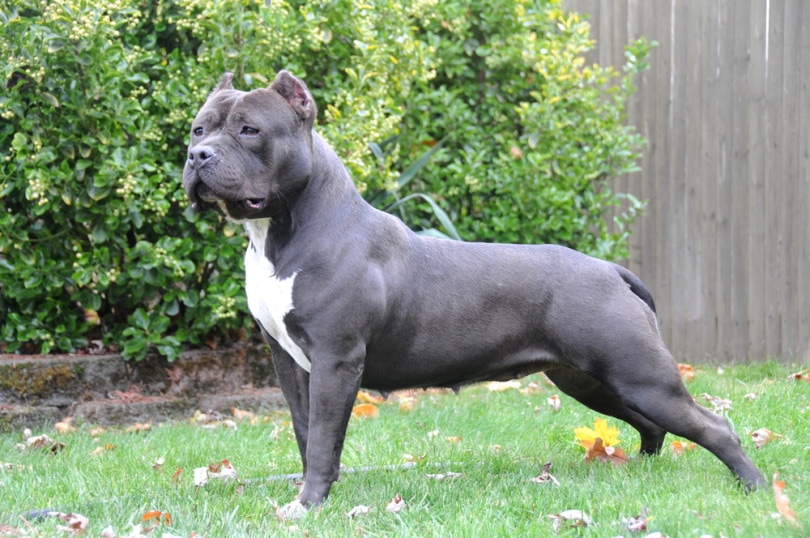
The American Bully is a relatively recent Pit Bull breed and mix of the American Pit Bull Terrier and assorted bulldogs. The compact dog has a stocky frame that exudes power and toughness. The bulky build backs a fighting nature, but Bullies are notably gentle and affectionate with people and even other animals.
Which Breed Is Right for You?
Pit bulls and Mastiffs boast distinct differences in temperament that will fit slightly different owners. Families with children can welcome either breed into the clan, but those already owning dogs should be wary of adding a Pit Bull. However, Pit Bulls are easy to train, eager to please, and people-oriented, making them better for a fun-loving first-time owner.
Mastiffs require experienced, patient, and confident owners if they hope to be well-mannered citizens. Though wary of strangers, they are gentle and calm around children and other pets and can adapt well to diverse living conditions. Prepare for a stubborn attitude that can make training one of the rare drawbacks to this otherwise lovable breed.
Research is critical when adopting either breed. Mastiffs carry significant health concerns requiring screening, while a Pit Bull’s pedigree can provide peace of mind when introducing them to others. With either of these powerful breeds, you can expect some of the most affectionate, family-loving personalities in the entire canine kingdom.
Featured Image Credit: (T) Doz777, Pixabay | (B) Ricantimages, Shutterstock

